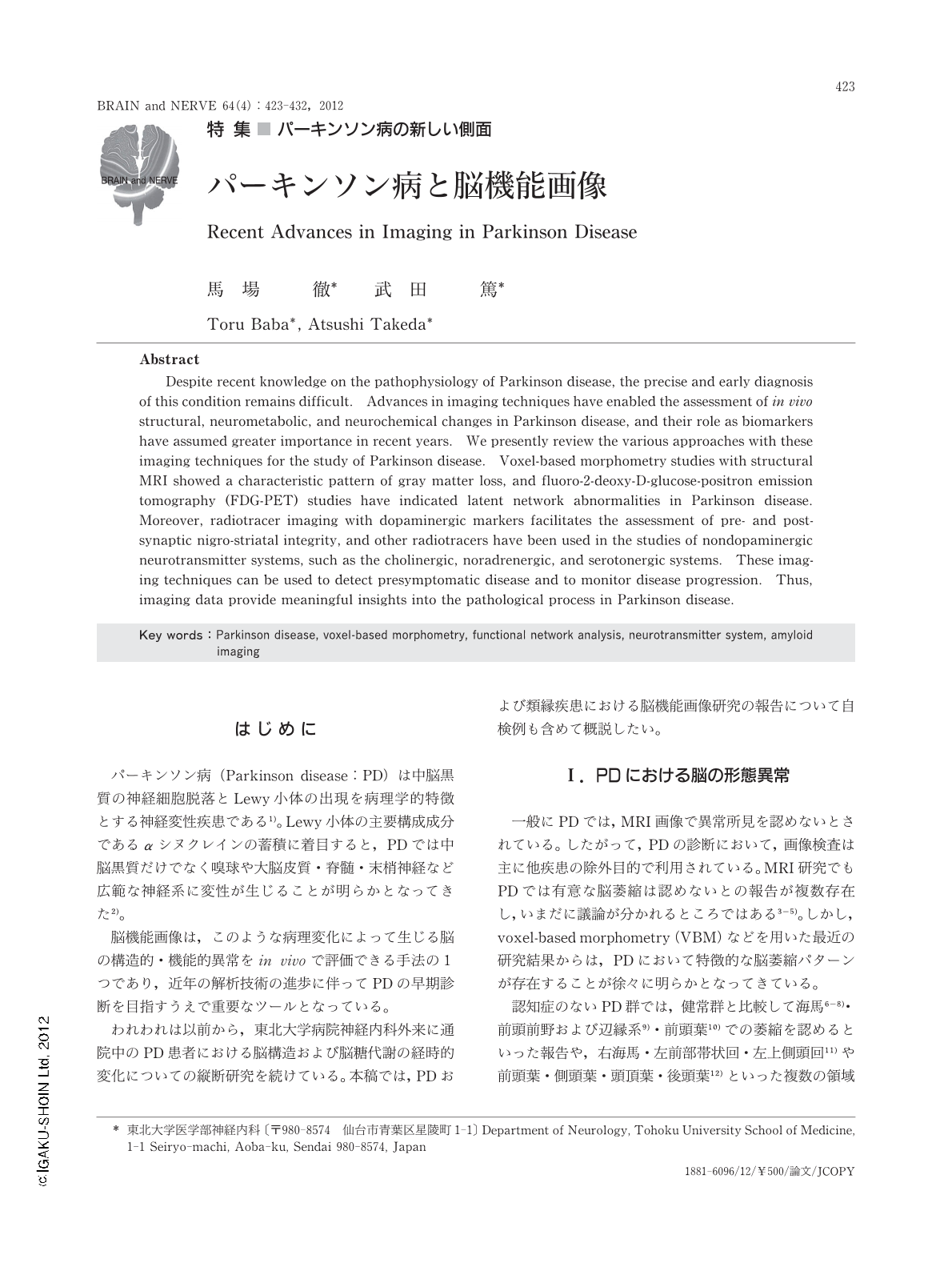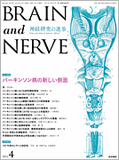Japanese
English
- 有料閲覧
- Abstract 文献概要
- 1ページ目 Look Inside
- 参考文献 Reference
はじめに
パーキンソン病(Parkinson disease:PD)は中脳黒質の神経細胞脱落とLewy小体の出現を病理学的特徴とする神経変性疾患である1)。Lewy小体の主要構成成分であるαシヌクレインの蓄積に着目すると,PDでは中脳黒質だけでなく嗅球や大脳皮質・脊髄・末梢神経など広範な神経系に変性が生じることが明らかとなってきた2)。
脳機能画像は,このような病理変化によって生じる脳の構造的・機能的異常をin vivoで評価できる手法の1つであり,近年の解析技術の進歩に伴ってPDの早期診断を目指すうえで重要なツールとなっている。
われわれは以前から,東北大学病院神経内科外来に通院中のPD患者における脳構造および脳糖代謝の経時的変化についての縦断研究を続けている。本稿では,PDおよび類縁疾患における脳機能画像研究の報告について自検例も含めて概説したい。
Abstract
Despite recent knowledge on the pathophysiology of Parkinson disease,the precise and early diagnosis of this condition remains difficult. Advances in imaging techniques have enabled the assessment of in vivo structural,neurometabolic,and neurochemical changes in Parkinson disease,and their role as biomarkers have assumed greater importance in recent years. We presently review the various approaches with these imaging techniques for the study of Parkinson disease. Voxel-based morphometry studies with structural MRI showed a characteristic pattern of gray matter loss,and fluoro-2-deoxy-D-glucose-positron emission tomography (FDG-PET) studies have indicated latent network abnormalities in Parkinson disease. Moreover,radiotracer imaging with dopaminergic markers facilitates the assessment of pre- and postsynaptic nigro-striatal integrity,and other radiotracers have been used in the studies of nondopaminergic neurotransmitter systems,such as the cholinergic,noradrenergic,and serotonergic systems. These imaging techniques can be used to detect presymptomatic disease and to monitor disease progression. Thus,imaging data provide meaningful insights into the pathological process in Parkinson disease.

Copyright © 2012, Igaku-Shoin Ltd. All rights reserved.


